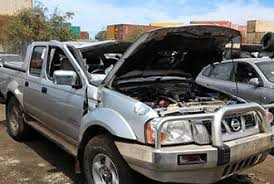When a battery pack is fully charged to 100 percent, its total (or gross) capacity is the amount of energy it can store. The user’s usable capacity is the amount of energy he or she has access to. The ratio of usable capacity to total capacity varies depending on the battery chemistry since certain lithium-ion batteries are better suited to being charged to 100%. In comparison, others will degrade faster if charged to 100% repeatedly. You can sell your old car on JCP Car Parts.
As a result, EV manufacturers have varying policies on how much battery they keep in reserve as a „buffer“ to extend the battery’s life. The user has no access to the energy in that buffer. The Volkswagen ID.4, for example, has an 82-kWh battery, although only 77 kWh is usable. To extend the battery life, Volkswagen keeps a 5-kWh buffer. This article contains a lengthy explanation based on some backlash regarding the new Lucid’s battery size. It explains why the charging procedure consumed significantly more power than the battery’s expected capacity, along with the sell your old car option.
What Is the Cause of EV Charging Losses?
The issue with this battery size disparity is that energy is lost in a variety of ways during the charging process, which adds up to considerable charging inefficiencies. According to infrastructure businesses like JCP Car Parts, customers are charged for the gross amount of energy used during the session, not the net amount of energy that makes its way into the battery pack.
Due to losses, the billed amount will always be higher, and it can range from 5-6 percent to 15 percent or more, depending on a variety of conditions. Both lower-powered AC charging and high-powered DC fast charging suffer from charging losses. The losses in AC charging are smaller in real-time, but because you have to charge for many hours at a time, they build up and can be much larger than the losses in DC fast charging, but this is dependent on several factors (AC charge rate, the efficiency of the onboard charger, temperature, EVSE, etc). When searching for ‘Buy Used Cars Auckland’, it will lead you to JCP Car Parts.
Let’s look at how charging losses accumulate during high-speed DC fast charging. It’s worth noting that the Lucid Air accepted more charging power than any other electric vehicle we’ve ever tested, at 304 kW. Higher charging power will result in more heat loss across all of the components involved in the charging process, from the charging station to the car’s battery to buy used cars Auckland.
Furthermore, these are estimations. The automobile, the charging station, the ambient temperature, and a variety of other factors will all play a role in determining how much energy is lost during any given charging session.
Losses At Charging Stations: 3%
For DC fast charging, it’s typical that around 3% of energy is dissipated to heat in the charging station during extremely high-powered charging rates like what the Air can accept. This energy never makes its way out of the charging station, but you have to pay for it because it costs the infrastructure company. Conversion losses incurred during the power conversion from AC to DC at the DC charging station, as well as the cooling of the charger and cables, may also be included in charging station losses. This can build up to around 3%, and 3% of 134 kWh equals roughly 4 kWh.
During The Charging Process, There Is A 4% Cooling Effect
During the charging process, roughly 4% of the distributed energy is required to cool the battery. The input energy given to the car during charging is split into multiple energy components, including cooling energy, ancillary 12V energy, dissipated heat into the cables, bus bars, and cells, and stored energy in the battery. The compressor power might be as high as 5kW on average during a charging session.
The higher the charging rate, the more heat is generated; therefore, the battery and its components must be cooled to avoid damage. If you’ve ever stood next to a Tesla on a V3 Supercharger, you’ll notice the fans working overtime to keep the vehicle cool so it can accept the maximum charge rate of 250 kW. All of this consumes around 4% of the provided energy, or about 5.4 kWh out of 134 kWh.
5% Reduction in Battery Efficiency
Finally, while fast charging, battery efficiency is only around 95%. The energy wasted while charging and discharging in the pack accounts for about 5% of the input and usable energy difference. Several factors influence the amount of heat generated inside the pack during fast charging, including charging current, the internal resistance of the battery cells and conductive channel, starting battery cell temperature, battery pack resistance, and so on.
Furthermore, battery capacity is measured in terms of discharging (useful) energy rather than charging energy. Some of the energy stored in the pack will be lost as heat during discharge, especially when high power is required from the system, and so the usable energy will be less than the stored energy. 6.7 kWh is equal to 5% of 134 kWh. Start building it now!


